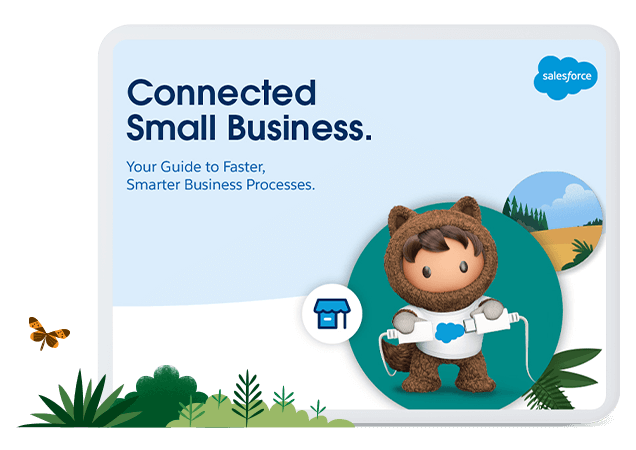Once upon a time, SMEs struggled to keep up with the technological and financial might of their bigger counterparts. Larger companies often had robust IT teams, expensive software licenses, massive sales and marketing budgets, and sky-high offices in thriving city centres – all packed with the latest computing equipment.
Today, those days of digital Davids and Goliaths seem positively quaint. Those mammoth data centres, impressive office buildings and pricey software licences that were once a competitive differentiator for big businesses? They now seem like unwieldy millstones. Today’s small business is agile and fluid. Today’s office fits in your pocket. And today's workforce is eager to upskill, unencumbered by physical boundaries, and newly empowered by technologies that anyone can afford.
What is driving this technological democratisation, and where might it take small businesses? To answer that, we need to look to the cloud.
Why cloud implementation is a game changer
Cloud implementation has provided SMEs with a range of benefits, from reaching new customer segments in new places, to establishing new revenue streams and shifting to remote working in the face of crisis. The ability to pivot and quickly create cloud-based business models was critical when COVID-19 hit. Many of those innovative business models, originally born out of necessity, have now taken SMEs to remarkable new places.
As we survey the landscape, it’s easy to see current small business trends as potentially seismic shifts that will create a new reality: one where remote or hybrid work is the norm, SMEs are radically reshaped by the on-demand economy, and cloud computing is more important than ever. In this new normal, cloud implementation won’t be a ‘nice to have’; it will be an imperative.
Here are some advantages that cloud implementation can offer today’s businesses.
The benefits of cloud implementation for SMEs
Real-time, 360-degree view of data that provides better insight and collaboration
Security that matches the needs of the business, paired with improved disaster recovery
Automatic updates keep SMEs in the loop, allowing them to course-correct or follow up quickly
Lower upfront investment, letting SMEs allocate capital where it’s needed most
Digital tools unlock productivity from anywhere, in or outside the office.
Digital conferencing apps keep workers connected and aligned
Improved version control, so SMEs can sure everyone is on the same page
On-demand software ensures you don’t pay for unused features
AI can be used to reduce repetitive tasks and increase EX (Employee Experience)
Top tips for cloud implementation
If you’re considering moving your SME’s operations to the cloud, there are some best practices to consider. For instance, you’ll have to decide if you need Software as a Service (SaaS), Platform as a Service (PaaS) or Infrastructure as a Service (IaaS).
With SaaS, third-party providers create applications and provide them to businesses via the Internet, usually on a subscription or pay-as-you-go basis. This can be a great option for SMEs who want access to a wide range of digital tools, but don’t want to have to develop, maintain and update apps themselves.
PaaS provides businesses and developers with an easy-to-use platform to develop, run, deploy and maintain their own apps – all in a simplified environment. This is a good option for organisations that want to create bespoke solutions but don’t want to spend the time and money on building and maintaining onsite infrastructure. It’s also a good option for SMEs looking for faster, easier development.
IaaS enables SMEs to keep their onsite technological footprint incredibly small, as memory, storage, software and operating systems are all provided via the cloud. Basically, IaaS offers a 24/7 offsite data centre that can be accessed from anywhere. This could be a good choice for rapidly growing SMEs that don’t want to invest heavily in hardware or scale up their onsite infrastructure.
Here are some more tips for successful cloud implementation:
Start small, working with a few apps and use cases, to see how your SME might best use the cloud. This should give you a better idea of what you’ll need when you scale up.
Put together a cloud implementation team from across functions or departments. This will help you address role-specific pain points and unlock the power of business synergy.
Focus on your business objectives and goals and create a strategy for how you can use the power of the cloud to achieve them. Figure out what KPIs will matter most.
Make a list of apps and tools that will be most beneficial for your SME, and consider a cloud implementation strategy that maximises their effectiveness.
Look for gaps in your list of apps and tools. If you can’t find a pre-existing digital solution, can you create your own low- or no-code app to solve the problem?
Create a data management strategy that meets regulations and requirements, maximises the potential benefits of your data, and helps to drive productivity.
Evaluate how your legacy systems will be affected by cloud implementation. For example, how will your CRM fit in? Do you need to create a bespoke solution?
Consider how cloud implementation might affect the workforce. Look for any digital skills gaps and see if they can be easily addressed through on-demand training.
Brainstorm any potential new business models, cost-saving opportunities and revenue streams. For instance, how might access to a global workforce transform your SME?
Run a cost analysis. Compare how much a PaaS, SaaS or IaaS solution will cost versus an onsite solution. Look at the costs of ongoing maintenance in addition to initial outlay.
Ready for a business without borders?
Those ten tips will give you a pretty good idea of where to start when considering cloud implementation. Every business is different – and every business has different pain points they want to address.
Whether you want to expand your hiring pool and create a global workforce that’s hyper-connected and ready for anything, or you want to offer better customer experiences or leverage AI, you’ll find a better world waiting in the cloud.
To see more about how to connect business processes and unlock your SME’s potential, read our free eBook, Leveraging Your Business Through Connected Processes.







